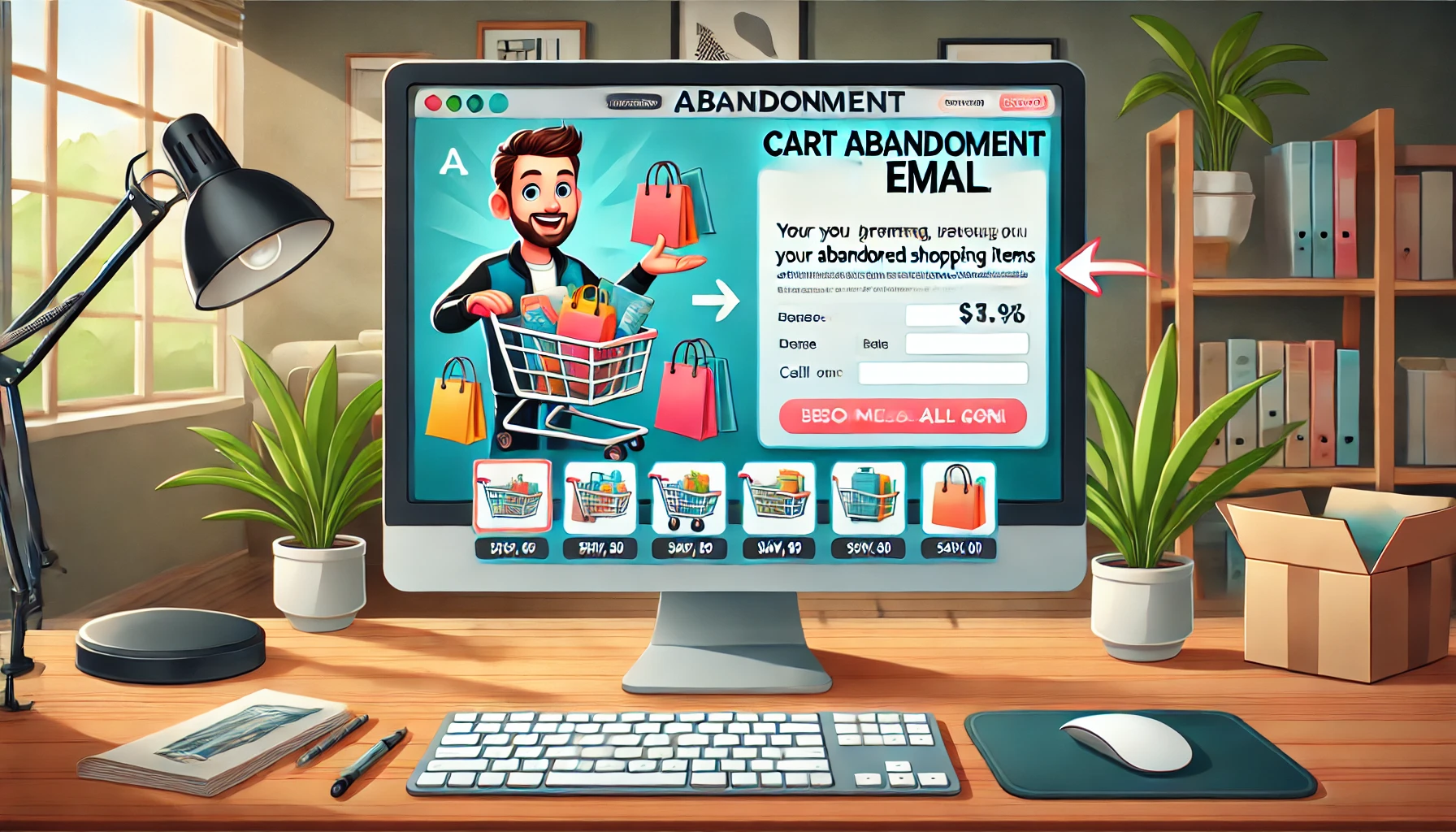In this article we will dive into something very crucial but often missed when businesses go digital: website accessibility. Think of your favorite physical store. Accessibility isn’t just a nice-to-have; it’s essential, right? The same goes for your website. This rundown is going to clear up what website accessibility is all about and why it’s important.
So, what is website accessibility? Simply put, it means ensuring that everyone, regardless of their abilities, can use your website. That means designing your site and any related tech so that all users, even those with disabilities, can access your content without a hitch. It’s about making sure that when someone visits your site, they can easily get what the page is about and know what they should do next. Whether they have a visual, auditory, cognitive, neurological, or physical disability, your site should cater to them.
Your website design and functionality need to consider all these aspects. Also, the types of devices that visitors use to browse your site can influence their experience. Here’s how different people might interact with your site:
- Visual Challenges: People who are blind, have low vision, or are colorblind might need features like high contrast colors, text magnification, or video captions. They often use screen readers or other tools to help them see content better.
- Hearing Challenges: Those who are hearing impaired will find captions, transcripts, or even sign language interpretation for videos and audio clips very helpful.
- Mobility Issues: people with mobility challenges need alternative ways to navigate your site. Ensuring that your site can be navigated with a keyboard and that the layout is logical is key for them.
- Cognitive Disabilities: For those with cognitive disabilities, having web pages with bold labels, straightforward content and options to pause any moving images or auto-scrolling elements can make a huge difference.
By being mindful of these needs, you’re not just opening your virtual doors to more visitors; you’re also crafting an inclusive digital space. That’s what website accessibility is all about—making sure everyone gets a fair chance to interact with your online presence, just as they would want to in a physical store.
Website Accessibility and the Law: What You Need to Know
Let’s talk about a very important topic that touches on both web design and legal stuff—website accessibility in the context of the law. In the U.S., there’s this thing called Section 508 that sets standards for all federal, state and local government websites. If your business connects in any way with the federal government, maybe through services or products you provide, you’ll need to be in line with these standards too. This could include businesses like real estate websites that facilitate access to housing.
Now, there’s also the Americans with Disabilities Act (ADA), which has been around for a while. It’s all about providing equal opportunities for people with disabilities. Website accessibility isn’t currently covered by the ADA, but don’t be surprised if that changes down the road. Plus, it’s worth noting that different states and even other countries might have their own rules when it comes to the rights of people with disabilities. So, it’s crucial to stay informed about the laws that apply where your business operates.
A lot of times, businesses don’t realize which parts of their website need a tune-up to meet these standards until someone complains or, even worse, they end up in legal hot water. According to Usable.net, which keeps tabs on this stuff, about 74% of accessibility lawsuits in 2021 targeted e-commerce sites. Interestingly, some businesses that tried to fix accessibility issues with quick fixes like usability overlays found themselves facing lawsuits. These overlays, which are supposed to automatically detect and fix accessibility issues, sometimes ended up complicating things even more. In fact, some lawsuits have pointed out that these widgets added extra problems.
Keeping up with accessibility isn’t just about staying out of court; it’s about making your website welcoming to everyone. Laws and standards are always evolving, so regularly checking your website to make sure it meets the latest guidelines is key. This doesn’t just help you avoid legal troubles—it also ensures that everyone, regardless of ability, can engage with your site effectively.
Understanding the Web Content Accessibility Guidelines (WCAG)
So, what’s the deal with the Web Content Accessibility Guidelines, or WCAG for short? These guidelines are put together by a group called the Web Accessibility Initiative, which is part of the World Wide Web Consortium—W3C for short. This group is all about making the internet a better, more inclusive place and they’re a non-profit, international bunch of tech whizzes.
The WCAG is basically a playbook of technical rules to make websites accessible to everyone, regardless of their abilities. While they aren’t laws, following these guidelines is considered best practice if you want your site to be accessible.
The guidelines are broken down into three levels of success:
- Level A: This is the basic level, kind of like the entry point for making your site accessible. It’s the easiest to achieve.
- Level AA: This is a bit tougher but is generally seen as the standard most sites should aim for.
- Level AAA: This is the gold standard, the most rigorous level, requiring the most work to comply with.
There are two main versions of these guidelines that you might come across: WCAG 2.0 and the newer WCAG 2.1, which rolled out in 2021. The older 2.0 version has 38 criteria for reaching that AA level, while 2.1 kicks it up a notch with 12 additional criteria, bringing the total to 50.
Designing an Accessible Website: Where to Start
Thinking about making your website accessible? It’s a smart move. Let’s dive into how you can design or evaluate your website for better accessibility. A good starting point is aiming to meet as many of the WCAG criteria as possible. Also, consider using some of the free online tools available to assess your site. These tools can help you identify what you’re doing right and where you might improve your site’s accessibility.
Checking Your Website for Accessibility: Key Areas to Focus On
- Alt Tags: These are crucial. Alt tags are text descriptions linked to your website images and they’re very important for people who can’t see your images. They also play a role in SEO. Every image on your site should have an alt tag that serves a functional purpose, not just describes the image. For example, for a search button, use “search” instead of “magnifying glass”.
- Page Titles: These should clearly describe what’s on the page and help differentiate it from other pages on your site. It’s about keeping users oriented.
- Headings: Use a logical hierarchy starting from H1 downwards. Ideally, headings should also serve as hyperlinks, allowing users to skip to relevant sections quickly.
- Color Contrast: A lot of people struggle with low contrast text. Text colors like grey or yellow on a white background can be hard to read. You should ensure a minimum contrast ratio of 4.5:1 for normal text. Bright colors can also be tricky for those with reading disabilities.
- Text Enlargement: Make sure that text can be easily enlarged without losing content or requiring horizontal scrolling. This is essential for users with visual impairments.
- Keyboard Accessibility: Some users can’t use a mouse and navigate sites using a keyboard. Make sure your site works well with keyboard-only navigation, allowing users to tab through elements and use the enter key to select.
- Control Over Moving or Flashing Content: Features like carousels or auto-updating feeds should have controls for users to pause or stop movement. This is important for those who find such motion disruptive.
- Multimedia Alternatives: Think about how someone who is deaf or blind might interact with your multimedia content. Offering transcripts and subtitles for videos and podcasts, as well as providing audio descriptions for visual content, can make a huge difference.
- Linearized Structure: Remember, not everyone interacts with your site in the same way. For instance, a blind person might use a screen reader that reads the site content in a linear fashion. It’s vital to ensure that your site’s content still makes sense when presented linearly.
Tools for Assessing Website Accessibility
Got a website? Awesome! Making sure it’s accessible to everyone should be high on your priority list. There are heaps of free online tools out there that can help you check how accessible your site is. The W3C offers a comprehensive list of web accessibility evaluation tools and I’ve got a few favorites to share with you.
- Google Lighthouse: This tool is a powerhouse for auditing accessibility, SEO, performance and more. It runs a check on your site, gives you an accessibility score out of 100 and provides a detailed report explaining how your score was determined. very handy to see where you stand and what you need to improve.
- Contrast Checker: From WebAim, this tool is a breeze to use. Just punch in the HEX codes of your site’s foreground and background colors and it’ll spit out the contrast ratio. It also shows you what text looks like in normal and enlarged sizes and checks if your site meets WCAG AA or AAA standards. Plus, it’s great for checking graphics for social media too.
- Pericles: Text to Speech Screen Reader: This Chrome extension is a game-changer. It reads your site’s content out loud, giving you a real sense of how screen readers interpret your page. There are plenty of other free text-to-speech readers available, which can be very helpful as well.
- Accessibility Checklist: This free tool compiles all the latest accessibility guidelines into one easy-to-navigate checklist. No more hunting through documents to find what you need!
Usability Testing
While tools and automated tests are great, nothing beats real-world usability testing with actual visitors to your website. This lets you see how people really interact with your site, uncovering issues you might miss with automated tools.
When setting up usability tests, remember to:
- Include a diverse group from your target audience, encompassing users with varying abilities.
- Involve users early in the development process. Let them try out prototypes and perform specific tasks. This can give you insights into how different design and coding elements work—or don’t.
- Always be ready to discuss and address any accessibility issues that come up.
The W3C also stresses the importance of gathering a wide range of inputs. It’s critical not to assume that one person with a disability represents all users with similar challenges. For more resources on finding users for testing and conducting effective usability assessments, the W3C website has a ton of useful info.
Once your testing phase is complete, combine what you’ve learned from real user interactions with the findings from your accessibility reviews. This blend of insights will help you make your website as accessible and user-friendly as possible. It’s all about creating a web space that everyone can enjoy and use to its fullest potential!
Accessibility Best Practices: Getting It Right
So, you’re diving into making your website more accessible? That’s awesome! Accessibility can seem a bit overwhelming at first, but starting with some quick wins based on your testing and reviews can really help. Here are some straightforward best practices you can implement to boost your site’s accessibility:
- Alt Text is Key: Always include alt text for all images. This helps people who can’t see the images understand what they’re about. For more complex images, go the extra mile with detailed descriptions.
- Color Isn’t for Navigation: Avoid using color alone as a way to differentiate items like links from regular text. This is very important because someone who’s color blind might not notice the difference. Also, instructions like “click the red button” won’t be helpful for them.
- Contextual Links: Ensure all your links make sense even if they’re read out of sequence. This is crucial for people using screen readers.
- Transcripts for Audio: Always provide transcripts for audio content, like podcasts. This makes your audio accessible to those who are deaf or hard of hearing.
- Structured Pages: Stick to a conventional page structure with clear titles, headings and appropriately sized text (usually between 16-18px for navigational elements).
- Caption Your Videos: Adding captions to videos is a must—it’s not just for those who can’t hear; it also helps users who are in a noisy environment or who process information better visually.
- Skip Navigation Feature: Include a skip navigation option so anyone using a keyboard can jump directly to the sections they need.
- Regular Testing: Keep checking your website for accessibility on a regular basis—like quarterly, annually, or after any major redesign. This helps you stay on top of any changes and ensures continuous accessibility.
Final Thoughts
The internet is meant to be for everyone. The whole point of accessibility is to knock down barriers that prevent people from accessing information, completing tasks, or achieving their goals. Whether it’s the way a website is designed, navigated, or interacted with, making your site accessible affects how visitors with different abilities experience it.
Regularly using online tools, conducting user testing, staying updated with guidelines and tweaking your site as needed are all crucial steps. They not only broaden your site’s reach but also increase its exposure and potential earnings by making it welcoming to a wider audience.
Need a hand with reviewing, updating, or optimizing your website for better accessibility? Our Website creation service team is here to help. Feel free to reach out to us anytime for support. We’re just a message away!
Frequently Asked Questions (FAQs)
What is website accessibility?
Website accessibility ensures that everyone, including people with disabilities, can use a website effectively. This means designing your site and its technology so all users, even those with visual, auditory, cognitive, neurological, or physical disabilities, can navigate, understand, and interact with your site without barriers.
Why is it important to follow the Web Content Accessibility Guidelines (WCAG)?
Following the WCAG is considered best practice for making your website accessible. These guidelines, created by the Web Accessibility Initiative of the World Wide Web Consortium (W3C), provide a framework for making content accessible to a wider range of people with disabilities. Complying with these guidelines not only enhances usability but also minimizes legal risks.
What are some basic accessibility features I can implement on my website?
Some basic but essential accessibility features include providing alt text for all images, ensuring sufficient color contrast between text and background, using logical structure for content, offering transcripts for audio, and enabling keyboard navigation. Implementing these features helps make your site accessible to people with various disabilities.
How often should I test my website for accessibility?
It’s advisable to test your website for accessibility regularly, such as quarterly, annually, or after any significant redesign. Regular testing helps identify and rectify any new issues that may arise due to updates or changes in content, ensuring continuous compliance with accessibility standards.
What should I do if I receive feedback about accessibility issues on my website?
If you receive feedback or complaints about accessibility issues, address them promptly. Review the specific issues mentioned, consult the WCAG to understand the requirements, and adjust your website accordingly. It’s also beneficial to involve users with diverse abilities in your testing process to gain more comprehensive insights into the usability of your site.












